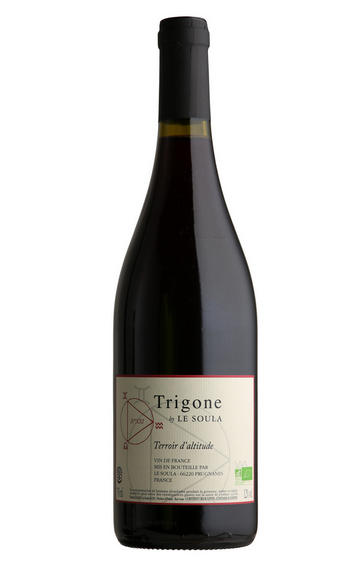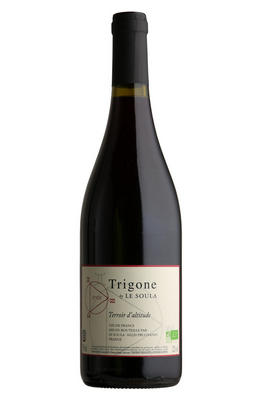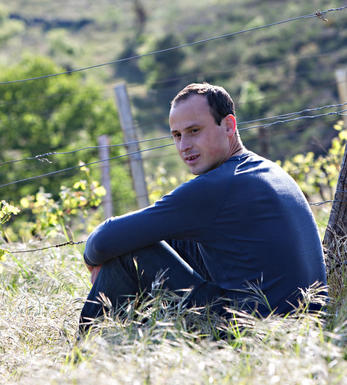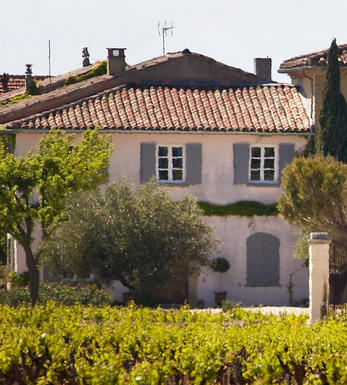
Le Soula, Trigone Rouge, Terroir d'Altitude, Lot XXI, Vin de France

About this WINE

Le Soula
Le Soula produces wines of remarkable quality at high altitude in the Fenouillèdes region of the Roussillon, in the foothills of the Pyrénées, up above the Agly valley.
Le Soula’s wines combine freshness and vitality, a characteristic which stems from the soil and the climate. The soil is granitic and poor. The climate is hard and extreme, combining the heat of the Southern sun with the cold and rain of the mountains at a height of between 350 and 600 metres, and the effects of the Tramontane wind.
There are 53 hectares of which 23 are planted with vines in small widely spread parcels with different expositions to the sun.
Gérard Gauby, the Roussillon's most highly respected vigneron, had become aware of the potential of vineyards at higher altitude to produce wines with real finesse. In 2001 he formed a partnership with his English wine importers, Roy Richards and Mark Walford, to create a new estate. In 2008, they were joined by Gérald Standley who now runs the vineyard and has become a partner in the enterprise.
Since the outset, the vineyards have been managed organically and they are now worked biodynamically. Being completely organic the vineyards are a haven for flora and fauna. Wild boar emerge from the forests to turn over the soils in search of grubs and herbs, which are to be found in abundance.
The vineyard is principally composed of very old vines with some planted more recently. The red grape varieties are Carignan, Syrah and Grenache noir . The white wines are blended from a cocktail of Macabeu, Sauvignon blanc, Grenache blanc and gris, Vermentino, Marsanne, Roussanne, Malvoisie du Roussillon and Chardonnay. Le Soula is to be found in a great many of the world's leading restaurants in many different countries

Vin de France
Vin de France is a wine classification in France that was introduced in 2010 to replace the former Vin de Table category. It represents a more flexible and modern approach to French wine production, offering winemakers greater freedom in terms of grape sourcing, blending, and winemaking techniques.
Unlike wines with controlled appellations such as AOC Alsace or Vin de Pays, which are tied to specific regions within France, Vin de France wines can be sourced from grapes grown anywhere in the country. This gives winemakers the freedom to experiment with grapes from different regions, allowing for greater creativity and innovation.
Winemakers can blend grape varieties from different regions or even different countries to create unique flavour profiles. This flexibility enables the production of a wide range of wine styles, from traditional varietal wines to innovative blends.
While Vin de France wines offer greater flexibility in production, they still must adhere to certain labelling requirements. The label must include the designation "Vin de France," along with the producer's name and the volume of alcohol. Additional information such as grape variety, vintage, and specific geographical origin may also be included on the label.
Vin de France wines may not have the prestige or strict regulations of wines from controlled appellations. However, they can still offer excellent quality and value. Many producers use Vin de France as a platform for experimentation and innovation, resulting in a diverse range of wines that cater to various tastes and preferences.
Vin de France wines are often positioned as versatile, everyday wines that are accessible and easy to understand. They can offer a good balance between quality and affordability, making them popular choices for everyday consumption.

Syrah/Shiraz
A noble black grape variety grown particularly in the Northern Rhône where it produces the great red wines of Hermitage, Cote Rôtie and Cornas, and in Australia where it produces wines of startling depth and intensity. Reasonably low yields are a crucial factor for quality as is picking at optimum ripeness. Its heartland, Hermitage and Côte Rôtie, consists of 270 hectares of steeply terraced vineyards producing wines that brim with pepper, spices, tar and black treacle when young. After 5-10 years they become smooth and velvety with pronounced fruit characteristics of damsons, raspberries, blackcurrants and loganberries.
It is now grown extensively in the Southern Rhône where it is blended with Grenache and Mourvèdre to produce the great red wines of Châteauneuf du Pape and Gigondas amongst others. Its spiritual home in Australia is the Barossa Valley, where there are plantings dating as far back as 1860. Australian Shiraz tends to be sweeter than its Northern Rhône counterpart and the best examples are redolent of new leather, dark chocolate, liquorice, and prunes and display a blackcurrant lusciousness.
South African producers such as Eben Sadie are now producing world- class Shiraz wines that represent astonishing value for money.


Buying options
Add to wishlist
Description
Crafted from a mix of 92% Syrah, 5% Carignan, and 3% Grenache Noir, the Trigone Rouge XXI by Le Soula is produced from organically grown vines, with an average age of 26, 112, and 56 years, respectively. The grapes are handpicked and grown using biodynamic methods, then left to macerate with their stems for 5 to 13 days, fermenting naturally. Afterwards, the wine is aged in a mix of oak barrels and wooden vats, without any fining or filtration before bottling, resulting in a small batch of 6,900 bottles and 180 magnums.
Drink now
Berry Bros. & Rudd
wine at a glance
Delivery and quality guarantee